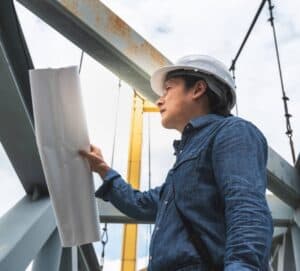How Much is a Structural Survey?
 Getting a survey carried out when you are planning to buy a new property is an important part of the process. Experts recommend that all buyers have a survey carried out on their potential new property in order to ensure that they are well-informed about the property and know what to expect in terms of any work or repairs that may need to be made. In some cases, a building survey may be a requirement set out by your mortgage lender before they are willing to release the funds to allow you to purchase the property, as information about any defects and other issues could impact the value of the home.
Getting a survey carried out when you are planning to buy a new property is an important part of the process. Experts recommend that all buyers have a survey carried out on their potential new property in order to ensure that they are well-informed about the property and know what to expect in terms of any work or repairs that may need to be made. In some cases, a building survey may be a requirement set out by your mortgage lender before they are willing to release the funds to allow you to purchase the property, as information about any defects and other issues could impact the value of the home.
What is a Structural Survey?
A structural survey is one of the three main building survey types that are available to buyers. Along with the condition report and homebuyer’s survey, the structural survey serves the purpose of informing home buyers about the condition of the property that they are about to purchase. Experts recommend always having a survey carried out on the property, even if there are no obvious problems or defects. On average, buyers save around £5k in repair costs and other work by having a survey carried out before making the purchase, ensuring that they are aware of any potential issues as soon as possible.
The structural survey is the most extensive and in-depth of the survey options. During this survey, the chartered surveyor will need complete access to all areas of the property including behind furniture, underneath floorboards, and in the loft or attic. The entire property will be thoroughly inspected to check for any signs of damage or issues such as wet or dry rot, damp, mould and infestations. The surveyor will also check for any signs of potentially dangerous materials such as asbestos being present in the property.
When is a Structural Survey Needed?
 Many homes will not need a structural survey, although buyers can always choose to have this more in-depth survey carried out on the property if they wish. However, there are some properties where a structural survey is typically likely to be recommended. You are likely to benefit from having a structural survey carried out if you are looking to buy an older property, for example, since older properties tend to have more hidden problems and issues that might not show up on a homebuyer’s survey or condition report. A structural survey is also usually recommended for buyers of properties that have obvious defects and are in need of renovation, so if you’re planning to get a bargain by purchasing a fixer-upper or at a property auction, be sure to factor in the cost of getting a structural survey. Finally, no matter the age or the condition of the home, if you plan to carry out major renovation work on the property in the future, a structural survey is the best option since this will ensure that you have all the information you need before you begin, along with ensuring that it will be safe to carry out the work you have planned in the property.
Many homes will not need a structural survey, although buyers can always choose to have this more in-depth survey carried out on the property if they wish. However, there are some properties where a structural survey is typically likely to be recommended. You are likely to benefit from having a structural survey carried out if you are looking to buy an older property, for example, since older properties tend to have more hidden problems and issues that might not show up on a homebuyer’s survey or condition report. A structural survey is also usually recommended for buyers of properties that have obvious defects and are in need of renovation, so if you’re planning to get a bargain by purchasing a fixer-upper or at a property auction, be sure to factor in the cost of getting a structural survey. Finally, no matter the age or the condition of the home, if you plan to carry out major renovation work on the property in the future, a structural survey is the best option since this will ensure that you have all the information you need before you begin, along with ensuring that it will be safe to carry out the work you have planned in the property.
What Does a Structural Survey Cost?
The cost of a structural survey will vary depending on several different factors including the size and value of the property. A property that has obvious defects or is run-down will also often cost more to survey since this will usually take the surveyor longer to go through. In general, you can expect to pay around £900 for a structural survey to be carried out on an average value property.
Is It Worth Paying for a Structural Survey?
Despite the fact that a structural survey is the most expensive survey type available, it can actually be the most cost-effective option, helping buyers save further money in the future by ensuring that they are fully aware of any issues that they will need to deal with once they own the property. In addition to this, buyers are also in a better position to negotiate the price of the property with the seller after getting a structural survey carried out. In some cases, buyers may be happy to reduce the price to cover the cost of any recommended or necessary repairs. Buyers may also be able to use the information provided to them in the structural survey to ask the seller to pay to have the necessary repairs carried out before completing the sale. Compared to the other survey types, the structural survey is more likely to bring up hidden issues that might not be easy to spot.
What Does a Structural Survey Involve?
The surveyor will look at several different factors both inside and outside of the property when conducting a structural survey. They will inspect the overall design and construction of the property and look for any potentially dangerous materials, construction, or building work that has been carried out without the necessary planning permission. They will also actively search for any potential defects and issues that might be present within the property including signs of damp, mould, infestations, wet rot, dry rot, subsidence and more, and check for damage to or removal of walls and lintels.
A full inspection of all the woodwork in the home will be carried out, and the roof will also be inspected for structural integrity. The surveyor will also inspect the property’s heating, plumbing, and electrical systems to check for any signs of damage or potential safety risks. They will also check for any potential boundary line or party wall issues that might come up for you in the future if you plan to carry out renovation work on the property. To conduct the survey, the chartered surveyor will need to be granted access to all areas of the property including in the loft or attic, behind furniture, and underneath floorboards. The survey will typically take most of the day to complete and you can expect to receive the report no more than ten days later.
Structural surveys are the most expensive type of building survey. However, they are also the most comprehensive, and therefore likely to help you save money in the future.
